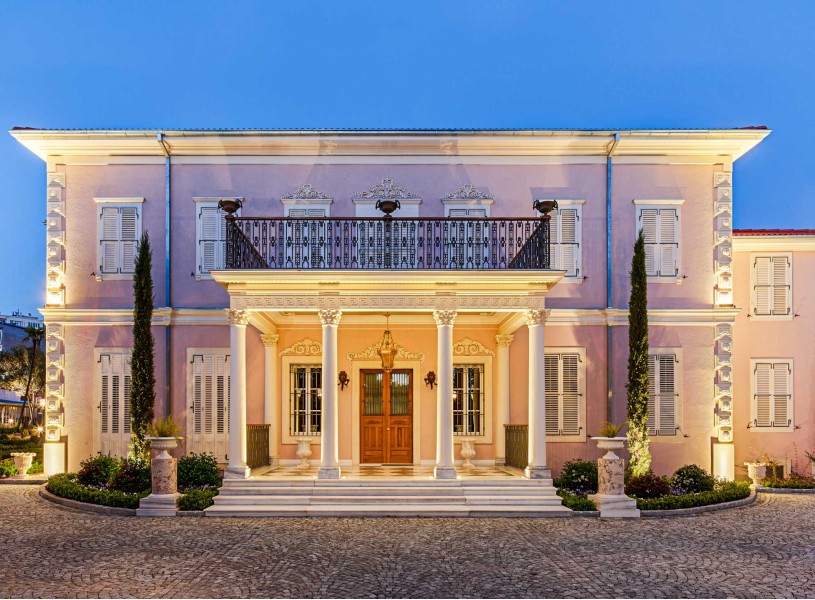
Arkas Art Bornova hosts the Arkas Carpet Collection under the roof of the historical Mattheys Mansion, one of the most beautiful buildings of its time, which Arkas Holding renovated. The Arkas Carpet Collection, which has been brought together for more than 30 years, has become one of the most significant carpet collections in the world, bringing together rare examples of Anatolian Carpets of the Classical Period, Anatolian Tribal Carpets, Ottoman Palace Carpets, and European tapestries. A selection of Anatolian Carpets produced between the 16th and 19th centuries, mainly in Western and Central Anatolia, is displayed in Arkas Art Bornova, İzmir, Türkiye.
The best examples of hand-woven carpets, one of the most significant elements of Turkish cultural heritage, were woven in Anatolia thanks to the tradition of carpet making that has continued for generations. Thus, Turkey began to be known as a carpet weaving center. Turkish carpets have been preferred for centuries as a sign of wealth, status, and prestige, presented as diplomatic gifts, and depicted in masterpieces of European painting as a source of inspiration to Western artists. Arkas Art Bornova Mattheys Mansion aims to preserve the precious examples of the art of carpet making, which is the product of thousands of years of tradition, to pass it on to future generations, and to share the Arkas Carpet Collection with large masses.
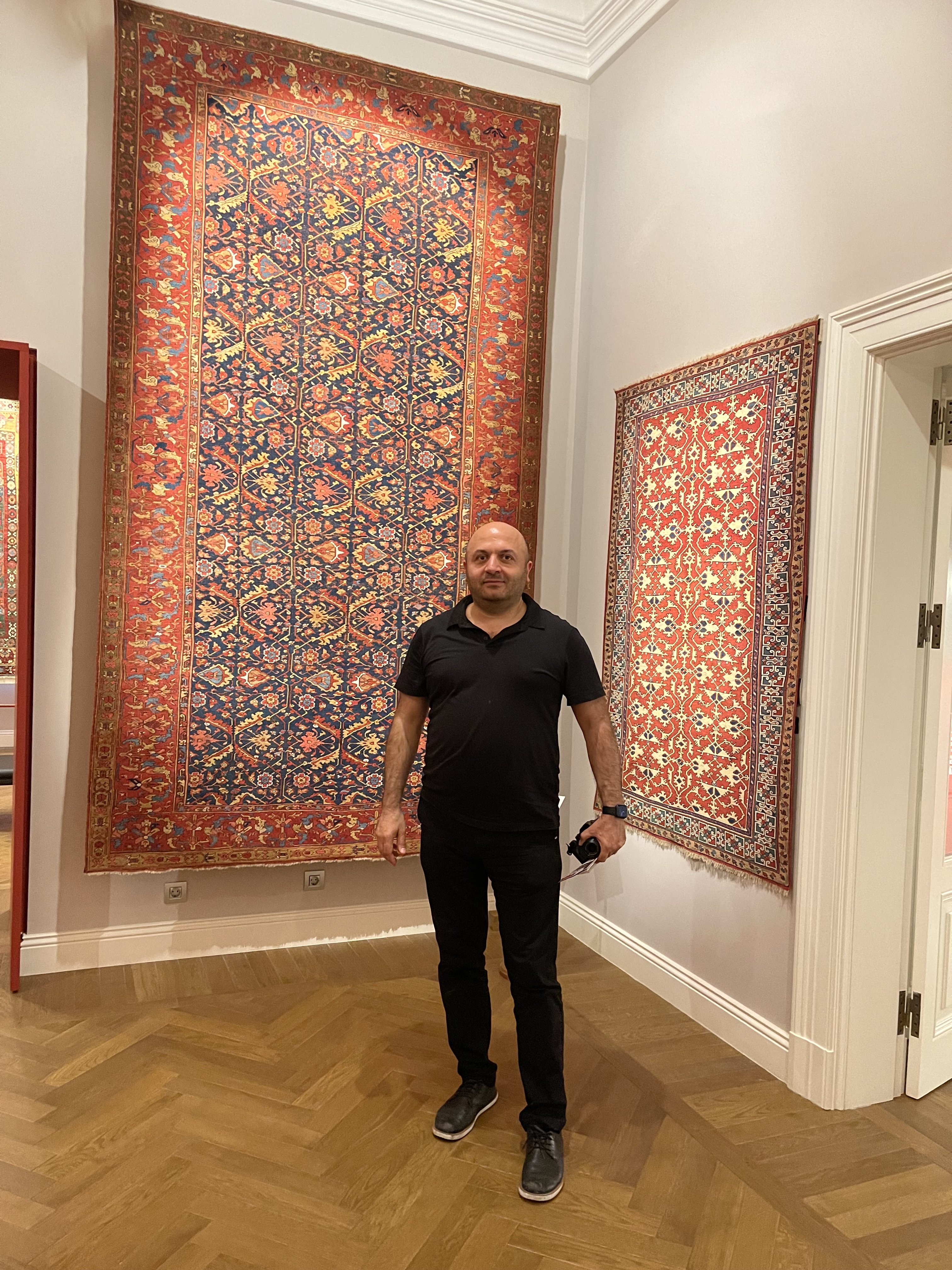
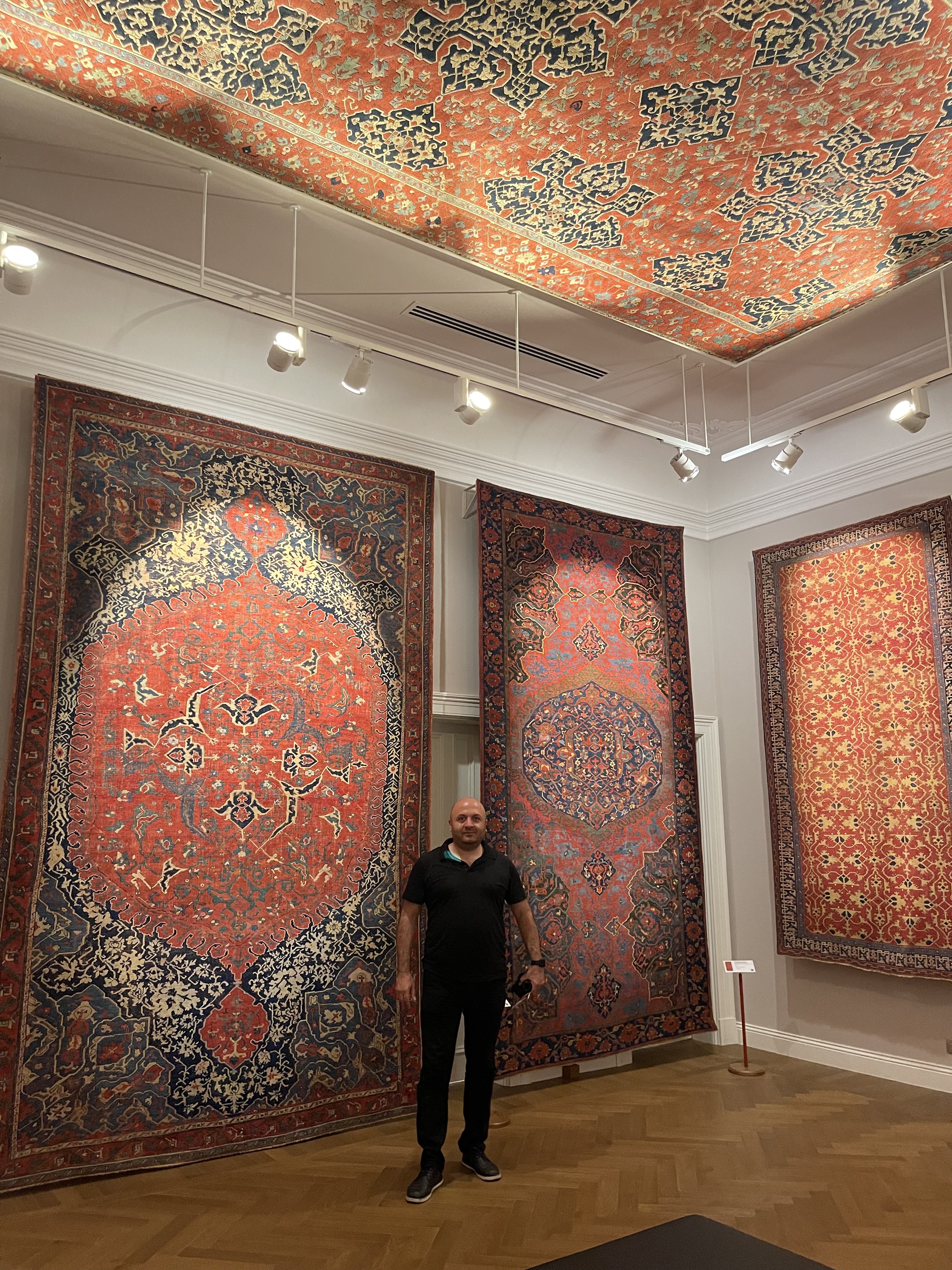
Ushak Carpets from the Arkas Carpet Collection
-I had the opportunity to visit the Arkas Art Museum at the Mattheys Mansion in Izmir, western Turkiye. During this visit, I was very excited to see a unique collection of Turkish and Anatolian carpets, which requires years of effort to collect. It was exciting to see the originals of the Ushak carpets that we currently produce as Ararat Rugs. The only Mamluk carpet in Turkey is also in this collection. I think it is a must-visit spot for carpet collectors who come to Izmir and those who love this art.’ -Hakan KARAR
The Arkas Carpet Collection, which has been brought together for more than 30 years, has become one of the most significant carpet collections in the world, bringing together rare examples of Anatolian Carpets of the Classical Period, Anatolian Tribal Carpets, Ottoman Palace Carpets, and Northern European tapestries. Matthews Mansion hosts a selection of Anatolian Carpets produced between the 16th and 19th centuries, mainly in Western Anatolia. The selection consists of prayer rugs with column or mihrab known as Holbein, Bellini, Lotto, Star Ushak, Medallion Ushak, and Transylvanian rugs from the Ushak region, as well as carpets from Gördes, Bergama, Çanakkale, Kula, Konya, Milas, and Akhisar regions.
The Star Ushak Carpet in the Collection:
The field design shows a section of the endless repeat pattern, formed by offset rows of eight-lobed star medallions (two full medallions placed centrally) alternating with smaller secondary diamonds on a red ground. The space between the medallions is filled with floral motifs. The main border consists of a so-called 'Gothic' border for a certain resemblance with the arches of the Gothic cathedrals. This pattern is composed of a meandering stem with attached leaves that form arches, similar to the reciprocal 'V' shaped bands used to frame the pages in illuminated manuscripts or motifs found in Safavid miniature paintings. Their association with royalty and sanctity in European painting underscores these carpets' status as luxury trade goods.
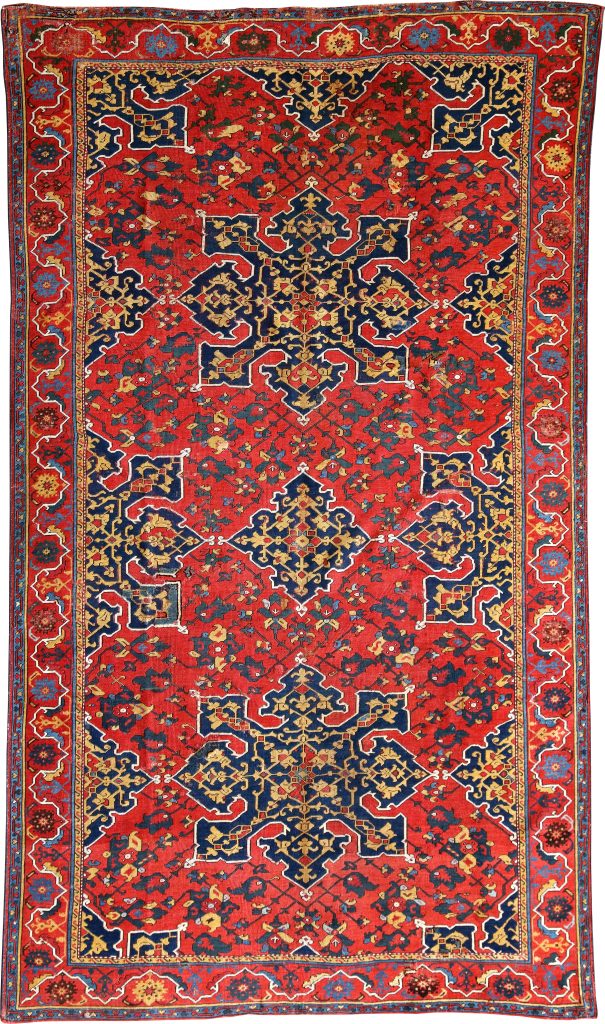 Star Uşak, Early 17th century, Wool, Inv. No: 358
Star Uşak, Early 17th century, Wool, Inv. No: 358
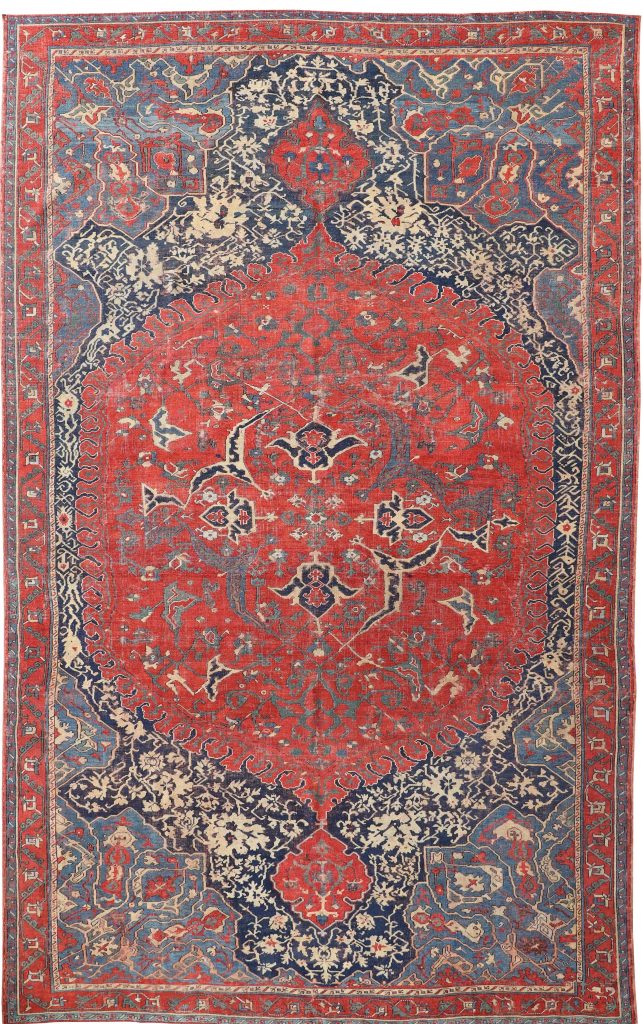 Large Medallion Uşak, Second half of 16th century, Wool, Inv. No: 518
Large Medallion Uşak, Second half of 16th century, Wool, Inv. No: 518
Ushak Large Medallion Carpet in the Collection:
This magnificent Uşak shows a squashed medallion against a red field, enclosed by two pendants and sections of secondary medallions at the sides. Typically, the blue medallion, decorated with a floral composition, is outlined by arabesques. The four quarter-medallions placed at the top and bottom give the impression of an infinite design, lending majesty to the installation. The rich color scheme is dominated by red, blue, and black with vibrant accents of green and yellow. The main border reflects a typical floral pattern, often found in Uşak carpets, with red palmettes and floral branches placed diagonally against the indigo ground.
Mamluk Carpet in the Collection:
Mamluk carpets were woven probably in Cairene workshops in the last period of the Mamluk Sultanate, which reigned over Egypt, Syria, and Palestine from 1250 until 1517 when the Ottoman Empire defeated it. Often mentioned as cairini or cagiarini (meaning "Cairene" or "from Cairo"), these carpets were well-known and appreciated in Italy in the second half of the 15th century. However, it was only in the 1930s that Mamluk carpets were identified as distinct from Turkish-Anatolian production due to specific technical peculiarities. The design of these rugs is characterized by centralized large octagonal, lobed, or star-shaped medallions displaying rich, minute ornamentation with a kaleidoscopic effect, containing a great variety of peculiar motifs such as the small umbrella leaves that resemble papyrus leaves.
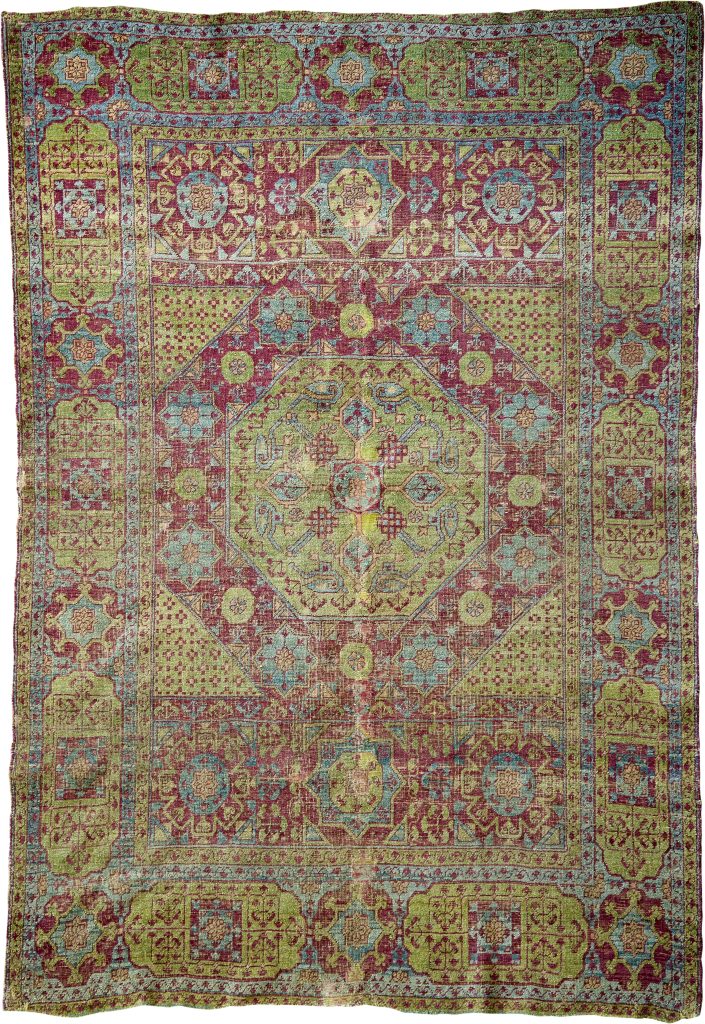 Mamluk Rug Egypt, Cairo, End of the 15th/beginning 16th century, Wool, Inv. No: 308
Mamluk Rug Egypt, Cairo, End of the 15th/beginning 16th century, Wool, Inv. No: 308
